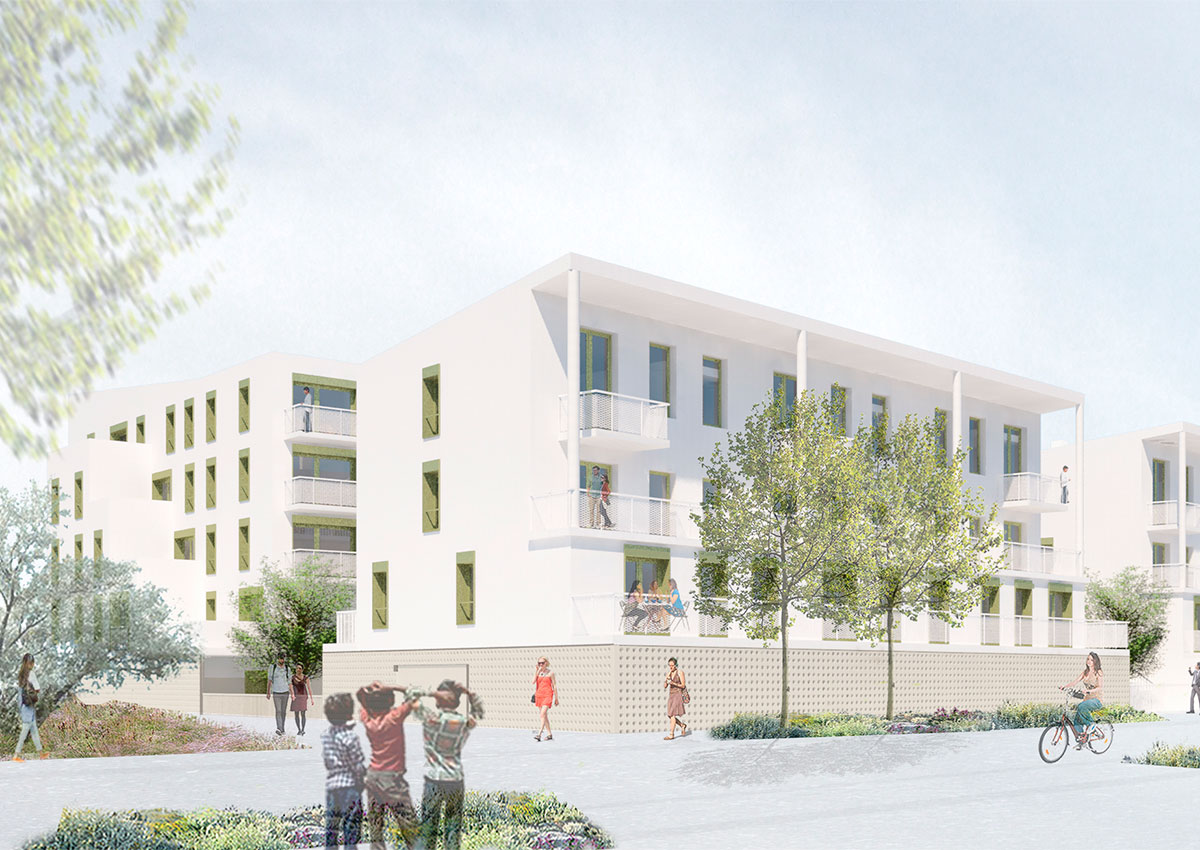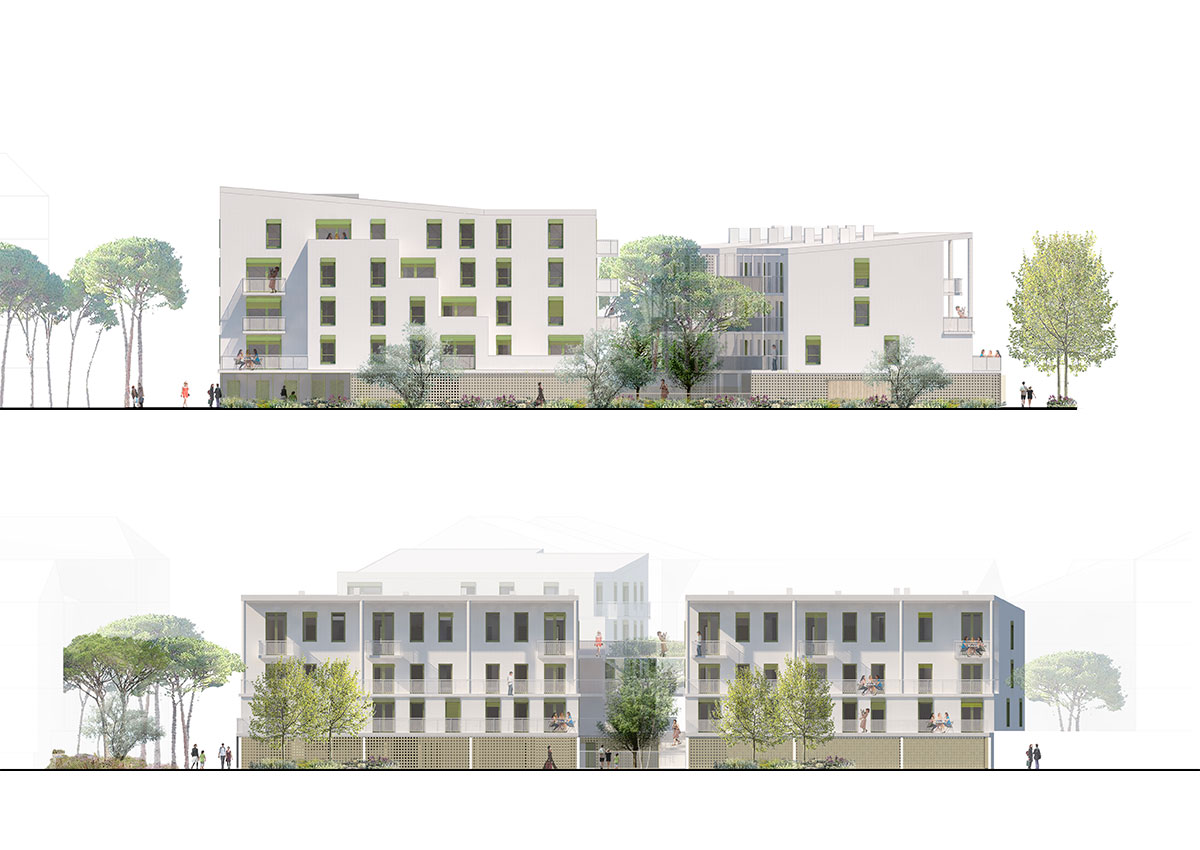Quartier des Pins
The urban project of the Pins neighborhood aims to enhance outdoor living by leveraging the potential of the Mediterranean climate in its social and architectural dimensions. One of its key features is the incorporation of interior tree-filled courtyards, which create a pleasant environment abundant with vegetation, shade, and protection against the wind.
Comprising of 42 intergenerational social housing units, the project consists of three interconnected volumes on the ground floor, with a shared parking lot. The deliberate variation in building sizes, both within the courtyards and facing the streets, facilitates better integration with the existing urban fabric surrounding the area. This complex is formed by the three buildings, along with the private housing project on plot 10C, encompassing a green courtyard at ground level. By offering a combination of social, subsidized, intergenerational, and privately-owned housing units within the same courtyard, the project promotes social diversity.
The housing units enjoy multiple orientations, allowing for different visual perspectives towards the public spaces. This design feature offers residents an urban lifestyle near the Mediterranean, providing various views of the green surroundings within the eco-district.
Each housing unit features its own terrace or garden, which is considered an additional room alongside the indoor living space. This outdoor area provides residents with the opportunity to place a table and chairs, allowing each household member to have their own space. Furthermore, all units have cross-ventilation or corner apartments, offering views towards the public spaces and interior gardens while ensuring optimal airflow and circulation within the dwellings.
The architecture draws inspiration from vernacular solutions that prioritize climatic efficiency. The use of materials with thermal inertia contributes to the energy efficiency of the housing units. The design also incorporates principles of natural cooling from traditional Mediterranean housing, featuring cross-ventilated apartments that ensure significant ventilation and air circulation. In addition, an energy strategy focusing on renewable and recovered energies, primarily photovoltaic and heat recovery systems, will be implemented to further enhance sustainability and reduce environmental impact.




The urban project of the Pins neighborhood aims to enhance outdoor living by leveraging the potential of the Mediterranean climate in its social and architectural dimensions. One of its key features is the incorporation of interior tree-filled courtyards, which create a pleasant environment abundant with vegetation, shade, and protection against the wind.
Comprising of 42 intergenerational social housing units, the project consists of three interconnected volumes on the ground floor, with a shared parking lot. The deliberate variation in building sizes, both within the courtyards and facing the streets, facilitates better integration with the existing urban fabric surrounding the area. This complex is formed by the three buildings, along with the private housing project on plot 10C, encompassing a green courtyard at ground level. By offering a combination of social, subsidized, intergenerational, and privately-owned housing units within the same courtyard, the project promotes social diversity.
The housing units enjoy multiple orientations, allowing for different visual perspectives towards the public spaces. This design feature offers residents an urban lifestyle near the Mediterranean, providing various views of the green surroundings within the eco-district.
Each housing unit features its own terrace or garden, which is considered an additional room alongside the indoor living space. This outdoor area provides residents with the opportunity to place a table and chairs, allowing each household member to have their own space. Furthermore, all units have cross-ventilation or corner apartments, offering views towards the public spaces and interior gardens while ensuring optimal airflow and circulation within the dwellings.
The architecture draws inspiration from vernacular solutions that prioritize climatic efficiency. The use of materials with thermal inertia contributes to the energy efficiency of the housing units. The design also incorporates principles of natural cooling from traditional Mediterranean housing, featuring cross-ventilated apartments that ensure significant ventilation and air circulation. In addition, an energy strategy focusing on renewable and recovered energies, primarily photovoltaic and heat recovery systems, will be implemented to further enhance sustainability and reduce environmental impact.